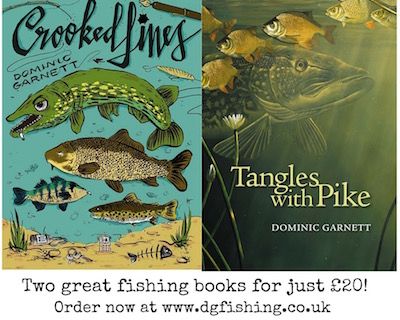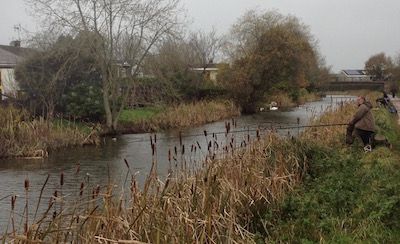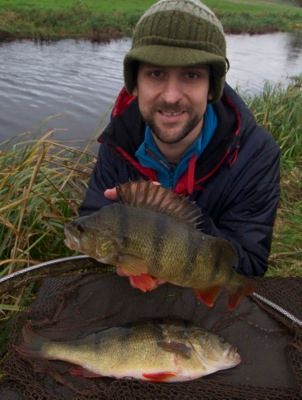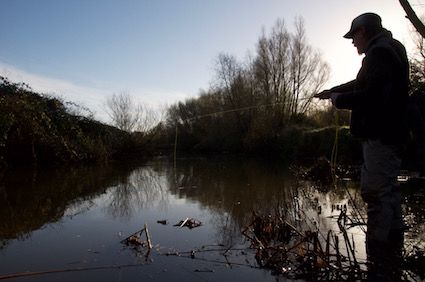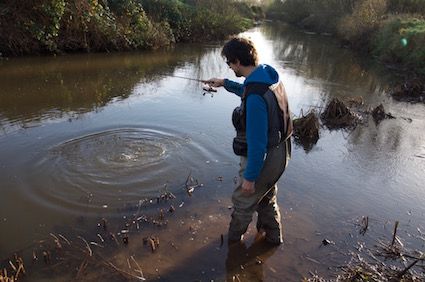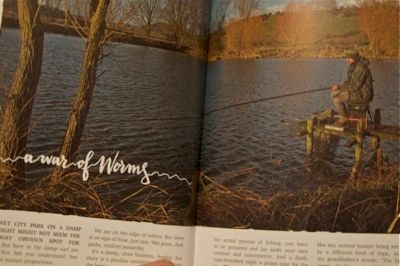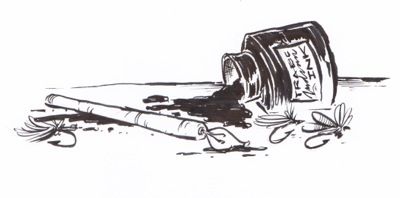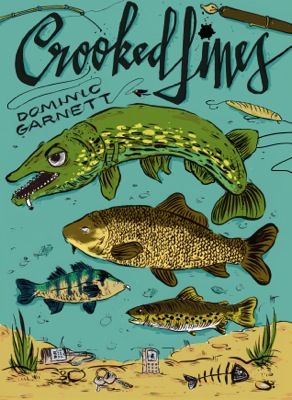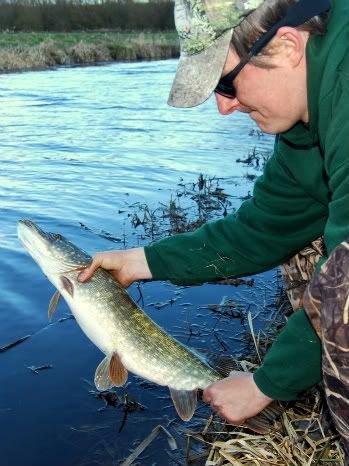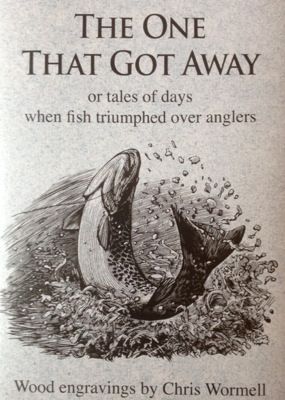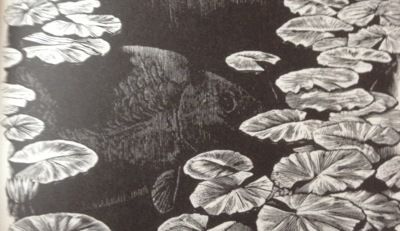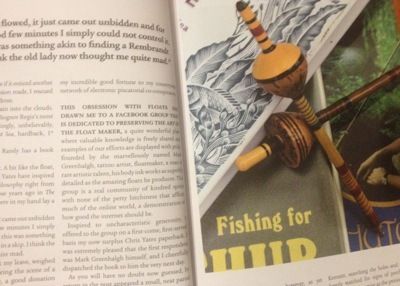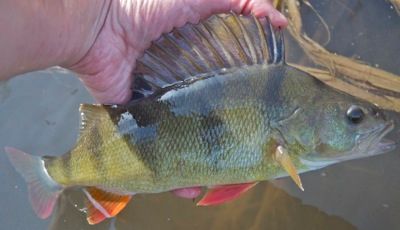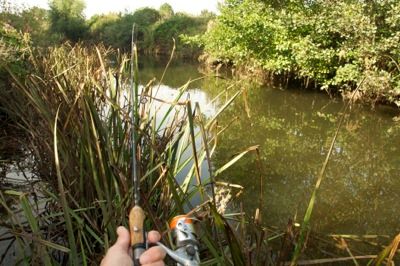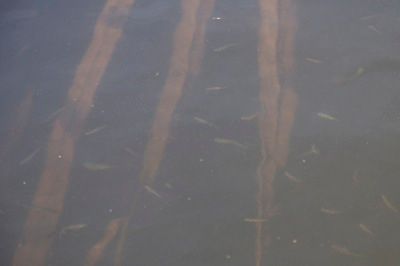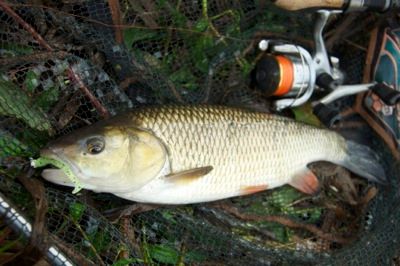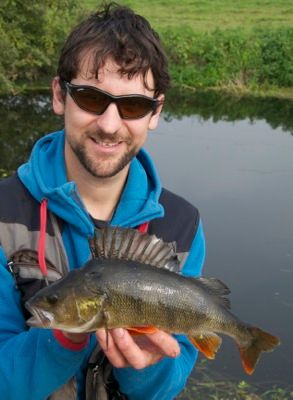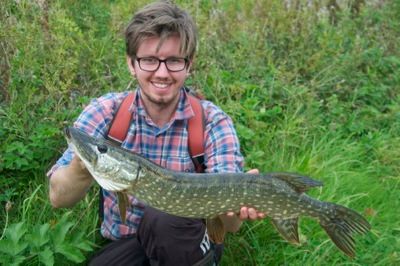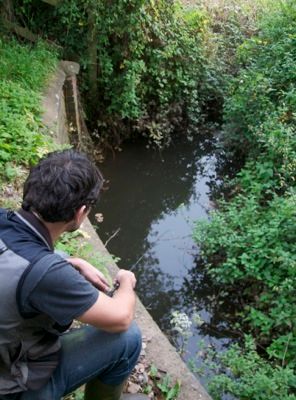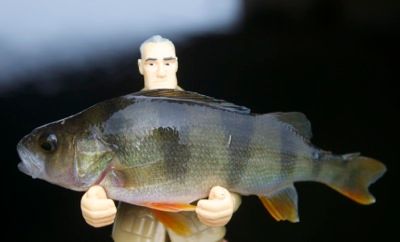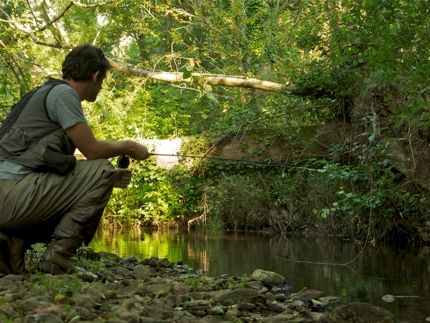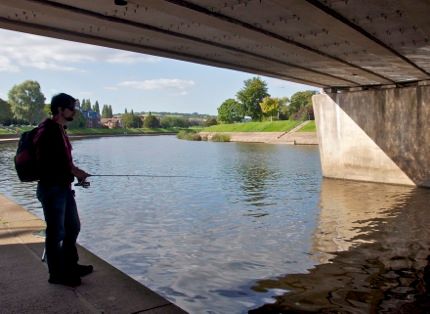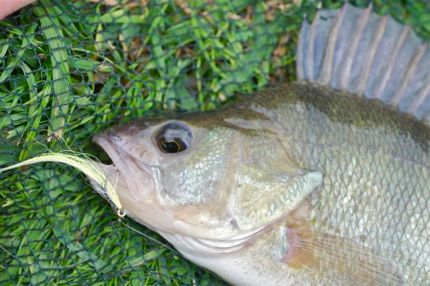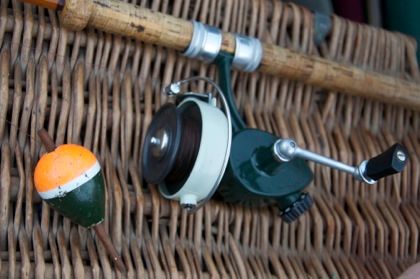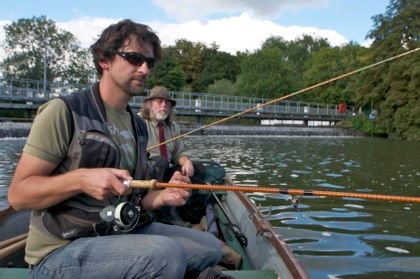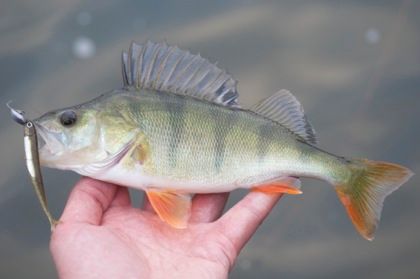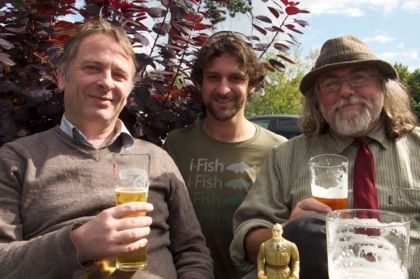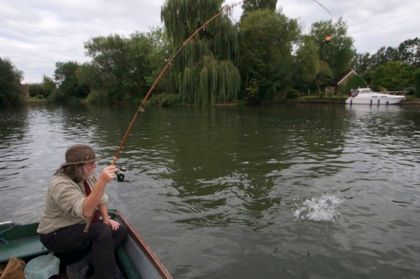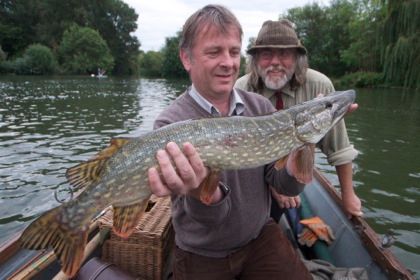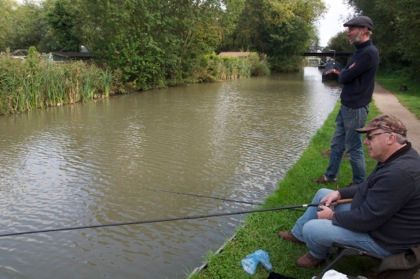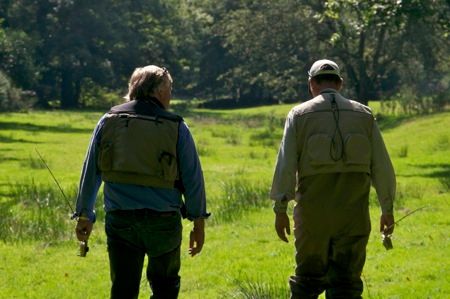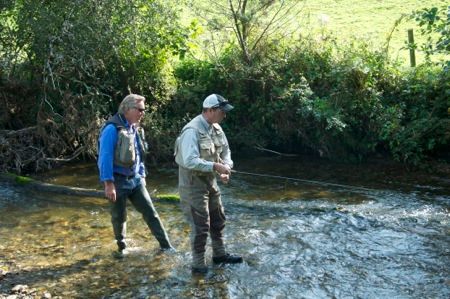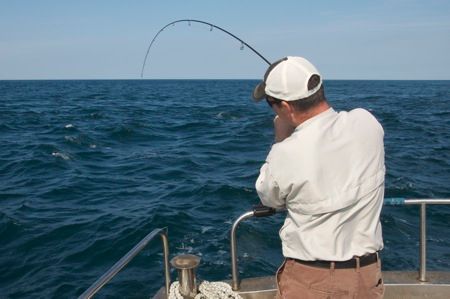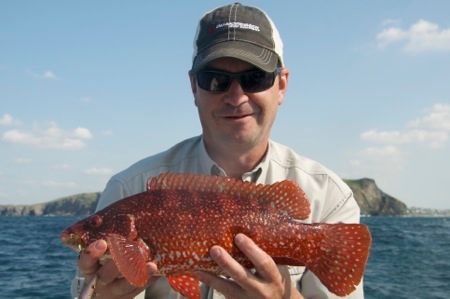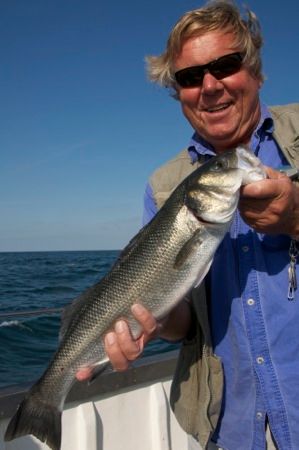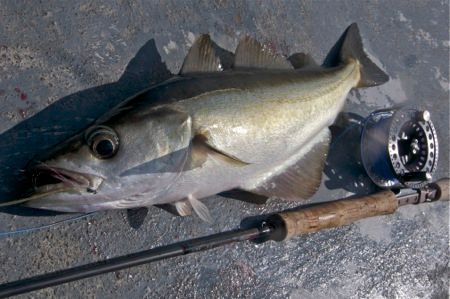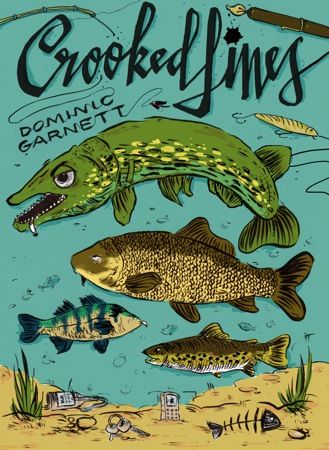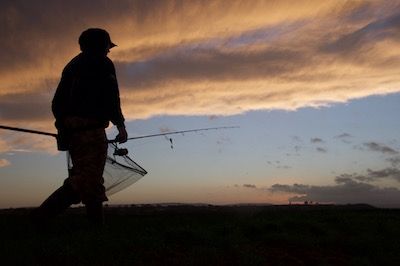
Balancing books, a day job and other bits can be challenging, but I also managed to grab a rare full day off in the week to head north for a spot of pike fishing on the Somerset Levels. The idea was to have a roam a couple of rivers and drains in the morning, before meeting up with Marcin Kwasniewski, a very useful lure fisherman with a surname that I'd imagine the Somerset locals have all sorts of fun with. A really good bloke anyway, who's also bailiff in Somerset, protecting his local waters from poaching.
Torrential rain had put the dampness on things a bit. You all know my mania for fly fishing, but I'm also pragmatic when it comes to pike fishing methods and do spend some time bait fishing each season. So I packed a couple of rods, some sardines and mackerel.
I tend to catch much greater numbers of pike on lures and flies than I do on dead baits, but in muddy water you sometimes need all the help you can get. I started on the West Sedgemoor Drain, which appropriately rhymes with rain. Conditions felt reasonable as I got there as it was barely light. I put a few yards between myself and the access point, before casting two dead baits out at intervals, spending little more than 20 minutes in each spot. It's a method that has served me well in the past, but today I simply could not buy a bite. I tried everything, but somehow it didn't look right. These little drains do switch on and off. Sometimes they get badly poached, or suffer from pollution or severe weather patterns. I guess that's both the joy and the gamble of fishing the Levels. Last years best fishing spots are today's duds, while elsewhere the reverse is true.
So off I went, taking one look at an even higher river, before trying another drain. This time I found better water clarity- not perfect, but better. There were immediately plenty of smaller fish showing. A really good, and cheap, predator fishing tip I can share from a few recent sessions is to take some left over bread with you. Or just buy a cheap white loaf. If you fish any water with a good head of silver fish, this can be a huge help to draw predators. You can easily mix it into ground bait on the bank too. Just pop three or four slices of bread in your landing net head and dunk into the margins. You can then just mash it up in your hands.
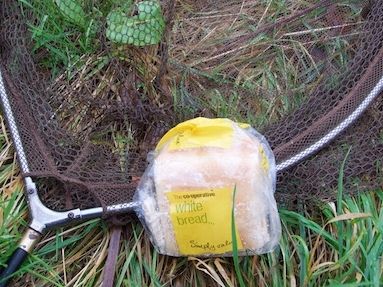
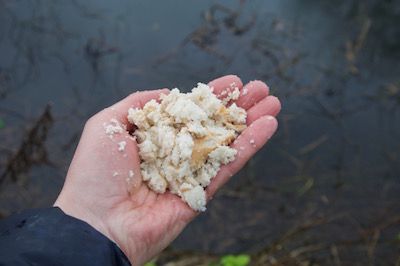
I quite often bait a couple of spots with a ball or two. I'll then fish elsewhere for a bit, but return after and hour or more and cast close to the feed. It works staggeringly well to draw in the tiddlers- and many of our Westcountry drains and canals have lots of small roach, skimmers and also invasive sun bleak aka "motherless minnows" in Somerset. If you can get these swarming, it creates a chain reaction. I know it's a fishing tip my good friend and fellow blogger Russ Hilton also swears by and besides groundbaiting for pike, we've also used this trick to catch big perch.
Another thing I've been doing for the past few seasons is trying single hook rigs for pike. Could these be a more pike friendly, long term alternative to treble hooks? I definitely think so. I feel that too many pike anglers don't really give single hooks a proper chance. We lose a fish or two and abruptly decide it's not for us. But if you persevere, they really do work well- or at least, I haven't noticed a big increase in fish not getting hooked or coming off.
Two things you must do, however, with single hook rigs. First, do use a large, wide gape hook (I tend to use Cat Master hooks in sizes 1 to 2/0). You must also adjust your baits a little. Chunks of lamprey or mackerel will work, but avoid big, tough baits that impair the strike. In fact, my favourite offering is sardine, which comes off easily with a firm strike, to let the hook penetrate. I also hair rig the baits on my single hook pike rigs, just to avoid losing them on the cast.
I was struggling at first but the clearer water in the second spot made me more confident. An hour in without a bite, I dropped straight onto my bread spot. Through my polarising glasses I could see little shapes turning and there was still a little white of the mashed bread on the bottom. I tossed a sardine just to the side of this and as I watched the bait flutter to the bottom, I immediately saw a decent fish move in and scoff the bait. It went nuts, but the single hook found its mark and I netted a reasonable pike without too much fuss.
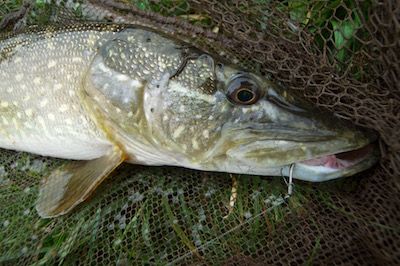
What I really like about the large single hook is how perfectly it hooks fish, right in the side of the jaw- no getting fouled up with gills like small trebles. Removing the hooks from pike is so much easier with just that one single too.
The fish looked like it should go eight or so pounds with any kind of girth, but still very welcome at a lean six or so I would guess.
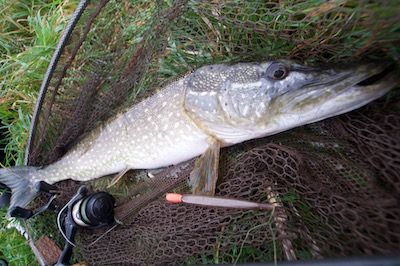
I tried a few different tricks on the day. Another was a small drifted roach, a method those of you who've read Tangles With Pike will know I also favour well. But it was a simple, static presentation that worked for two further jacks, both on a sardine and a single hook rig. There's a feature in it at some point, but for now suffice to say that single hooks are working well for me.
Just as the drizzle picked up, it was time for me to shift again, and drive a few miles further to meet Marcin out on the Levels. I'm going to be writing a little feature on his approach to lure fishing and life, for early 2016. We only had a couple of hours proper light, but I got some great shots and some really interesting lure fishing tips too. He catches a lot currently on little SpinMad lures- ingenious little hybrid lures with a tremendous kick and vibration. A little taste below, but watch this space for the full story.
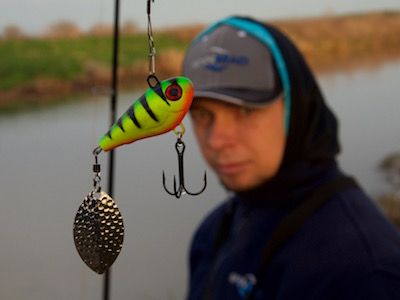
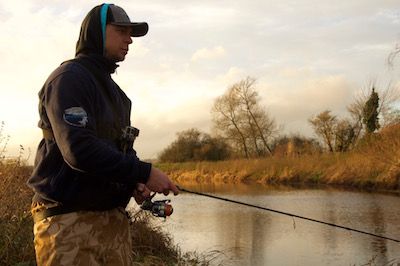
Anyway, I wish all of my blog readers a great Christmas and hope you get some fishing in. If you've yet to treat yourself or a friend to a copy of Crooked Lines there's still a little time to order at www.dgfishing.co.uk and I promise to send all subsequent orders first class. YOu'll also find it at the evil empire of www.amazon.co.uk where it can also be bought as a £4.99 E-Book, as can Tangles With Pike
With so many of the current celebrity fishing books retailing for £25 or more, that has to represent good value. But another benefit of independent publishing is that I can keep prices affordable. Don't forget, you can also buy both of my most recent books for just £20 at www.dgfishing.co.uk
